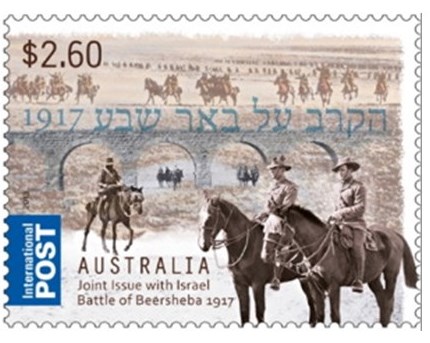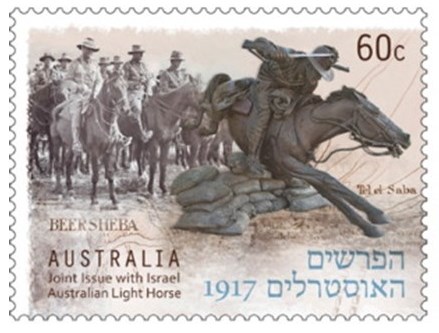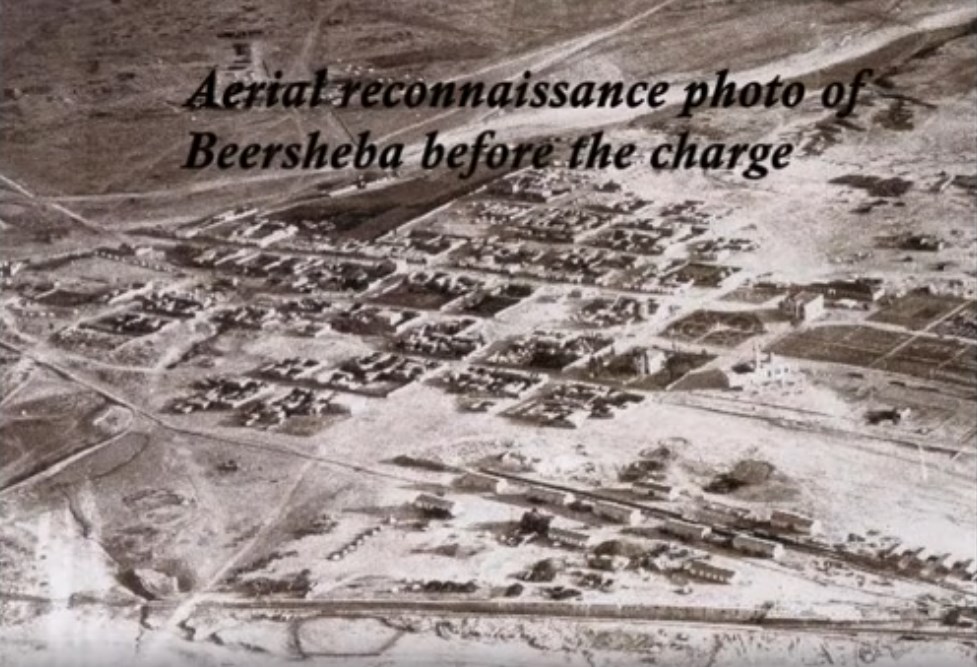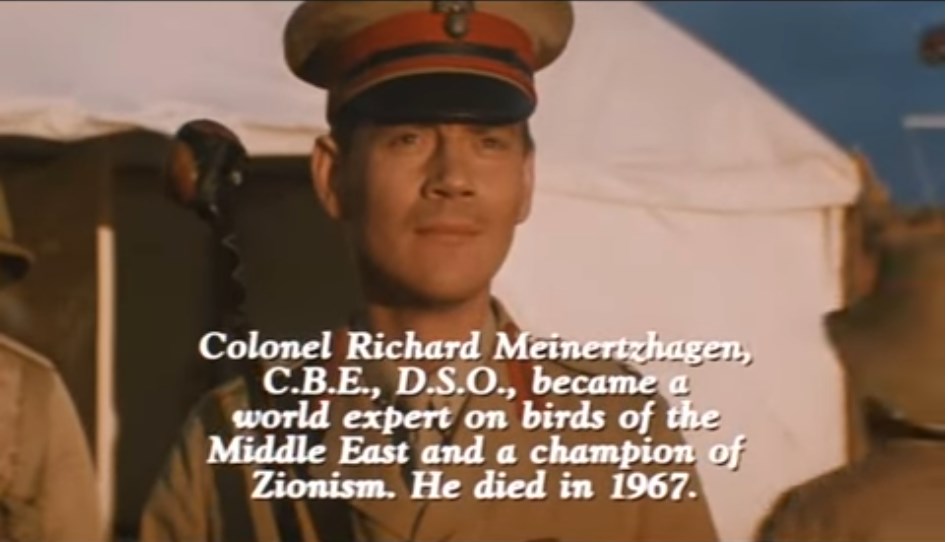

Australian Anzac day is really anti-Semitic Zionist Globalist day
The Australian troops did hold the Turkish forces in high respect. This was given after the Turks proved how tough and gutsy they were during the battles at Gallipoli.
Two Steps from Hell Victory Charge of the Australian Light Horse, Beersheba - extended version
Battle of Beersheba Part 1 10 31 1917 Battle of Beersheba Part 1 10 31 1917
ANZAC Zionist Day
April 24th, 2012 | Author: Dallas Clarke
The Sacrifice Australian soldiers made in Gallipoli was for the Zionist Jews in Britain, not for Australia!
Zionist Prime Minister Winston Churchill of Britain ordered our troops to fight in an area where they could not defeat the enemy, because the Zionists in Britain USA Germany EU all worked together to make the war look legitimate… just like in WWII
WAR is good for Zionist Globalist business!
Great article on anzac day memorial here by crikey.com.au
Anzac Day and why we need to question ‘myths’ of war
Boar, Paul Maley wrote a book about it. Track it down because the massacre was horrendous.
Even worse though when Maley wrote the book he wrote only about the effect on jews, didn’t interview a single arab descendent of those
Bedouin’s Äustralian soldiers massacred in 1919.
http://www.jewishterrorism.com/category/anzac-zionist-day/
Archive for the ‘Zionist Richard Pratt’ Category
September 27th, 2013 | Author: Dallas Clarke
The remarkable lengths to which Jewish Supremacists will go to cover up Zionism’s crimes has been exposed once again with the blatant lies prepared by the Australian Post Office’s recent joint stamp issue venture with the Israeli Post Office.
The joint issue of a special stamp by both post offices celebrated the Battle of Beersheba, which took place on 31 October 1917 and was part of a wider British offensive known as the third Battle of Gaza during World War I.
The final phase of this day-long battle was the famous mounted charge of the 4th Light Horse Brigade, widely considered to be the last great mounted charge in military history. Thirty-one Australian Light Horsemen were killed in the charge and 36 were wounded.
According to the Australian Post Office website, this “capture of Beersheba allowed British Empire forces to break the Ottoman line near Gaza and then advance into Palestine, a chain of events which eventually culminated in the establishment of the state of Israel in 1948.”
The stamps were designed by a South African Jewess living in Australia, Simone Sakinofsky.
Vacy Vlazna, Coordinator of Justice for Palestine Matters in Australia, pointed out that the “stamps are cynical rewriting of Australian war history that deflects ANZAC honour to ... Israel.
“Connecting the ‘capture of Beersheba’ to ‘the establishment of the state of Israel’ is an outright lie,” Vlazna wrote. http://www.jewishterrorism.com/category/zionist-richard-pratt/
The Australian troops did hold the Turkish forces in high respect. This was given after the Turks proved how tough and gutsy they were during the battles at Gallipoli.
And only one of the thousands of horses that were sent to the Middle East was allowed home. The remainder were killed before the troops went home.
They threw 55000 British troops at Beersheba all day and in the fading light 800 Australians took the town greatest cavalry charge in history.
The light horse were mounted infantry. They would normally dismount to fight. The Turks where not expecting them to charge all the way. The horses had been without water for a day and this was a final effort to take Beersheba. The horses smelled the water of the wells in Beersheba and there was no stopping them once the charge commenced. The Turks did not lower their rifle sights as the horses charged in, the artillery either did not lower their sights or couldn't lower them quickly enough.
Don't forget us Kiwi's :-) - The capture of Beersheba (Be’er Sheva in modern Israel) was a turning point in the struggle between the British and Ottoman Empires in the Middle East in the First World War. The New Zealand Mounted Rifles Brigade played a key part in the capture of the town. Twice in 1917 the British-led Egyptian Expeditionary Force (EEF) had failed to take Gaza, the gateway to Palestine. Its third attempt focused on Beersheba, on the eastern (inland) flank of the Ottomans’ defensive line. While three British infantry divisions attacked the main Ottoman defences on the outskirts of Beersheba, the Australian and Anzac Mounted Divisions rode in a wide arc to the east to attack the town from the rear. On the morning of 31 October 1917 men of the New Zealand Mounted Rifles Brigade attacked Tel el Saba, a fortified hill 3.2 kms north-east of Beersheba. After six hours of hard fighting the New Zealanders captured the hill. The way was now clear to attack Beersheba itself, but daylight would soon fade. In a daring action, the 4th Australian Light Horse Brigade charged in from the south-east with bayonets drawn, taking the Ottoman defenders by surprise. The town and its important wells were soon secured and the enemy retreated. By the end of the day at least eight New Zealanders had been killed and 26 wounded. The EEF now sought to trap the main Ottoman forces defending Gaza, but lack of water and skilful rearguard actions allowed most of the enemy troops to escape. Within a week, the Ottomans had abandoned Gaza.

Two Steps from Hell Victory Charge of the Australian Light Horse, Beersheba - extended version
Don't forget us Kiwi's :-) - The capture of Beersheba (Be’er Sheva in modern Israel) was a turning point in the struggle between the British and Ottoman Empires in the Middle East in the First World War. The New Zealand Mounted Rifles Brigade played a key part in the capture of the town. Twice in 1917 the British-led Egyptian Expeditionary Force (EEF) had failed to take Gaza, the gateway to Palestine. Its third attempt focused on Beersheba, on the eastern (inland) flank of the Ottomans’ defensive line. While three British infantry divisions attacked the main Ottoman defences on the outskirts of Beersheba, the Australian and Anzac Mounted Divisions rode in a wide arc to the east to attack the town from the rear. On the morning of 31 October 1917 men of the New Zealand Mounted Rifles Brigade attacked Tel el Saba, a fortified hill 3.2 kms north-east of Beersheba. After six hours of hard fighting the New Zealanders captured the hill. The way was now clear to attack Beersheba itself, but daylight would soon fade. In a daring action, the 4th Australian Light Horse Brigade charged in from the south-east with bayonets drawn, taking the Ottoman defenders by surprise. The town and its important wells were soon secured and the enemy retreated. By the end of the day at least eight New Zealanders had been killed and 26 wounded. The EEF now sought to trap the main Ottoman forces defending Gaza, but lack of water and skilful rearguard actions allowed most of the enemy troops to escape. Within a week, the Ottomans had abandoned Gaza.
Only 36 killed and 31 wounded for the Light Horsemen. Over 500 Turks killed and 2000 captured.

The Lighthorsemen - Conclusion
Awesome, Aussie bravery, nobility! But what is Australia now? How could you gave up your arms?! Current generation bowing to islamonazis, sodomy. Israel will always be grateful to liberators of Beer Sheva!
Both Australia and Turkey have great respect for each other for the bravery shown on both sides
The Horse used in the charge at beersheba was the "Waler", an Australian breed that was bred for harsh outback conditions.They served the soldiers well.
And only one of the thousands of horses that were sent to the Middle East was allowed home. The remainder were killed before the troops went home.
The outbreak of World War I saw action in the Middle East between the British and Ottoman Empires from 29 October 1914 to 30 October 1918. The Australian Light Horse Regiments, part of the British Empire’s Desert corps, played a decisive role in the invasion of Ottoman-held Palestine in 1917.
Australia’s extraordinary military contribution to the ending of 800 years of Ottoman rule in Palestine coincided with publication of the Balfour Declaration in November 1917. This confirmed British Parliamentary support for the establishment of a Jewish National home in Palestine and was the first official step on the road to attainment of Jewish statehood.
Interest in the Zionist movement provoked a new awareness of Jewish culture and heritage among Diaspora Jews, and initiated a global rejuvenation of Jewish identity as local communities set up fund raising campaigns to assist new Jewish settlements being established in Israel.
Early Australian Zionists included important community leaders such as General Sir John Monash, commander of the Australian corps in France from 1917. An Australian born Jew of Prussian parentage, Monash was credited with instigating the offensive which broke the Hindeburg Line thus winning the war. In peacetime, Monash came to be regarded as the greatest living Australian. In 1927 he was made foundation President of the Zionist Federation of Australia, having presided over the opening of the NSW Jewish War Memorial, or Maccabean Hall, in Darlinghurst, Sydney, on 11 November 1923.
During the 1930s, with persecution of European Jews on the rise, several resettlement schemes were proposed worldwide. In May 1939, the Freeland League for Jewish Territorial Colonists dispatched Isaac Steinberg (1888-1957) to investigate the feasibility of purchasing 7 million acres in far Northwestern Australia on which to settle 75,000 Jewish refugees. Known as the Kimberely Scheme, this proposal did not proceed, as Prime Minister John Curtin advised in July 1944 that the Australian Constitution did not permit group settlement on this scale.

3/06/2018


